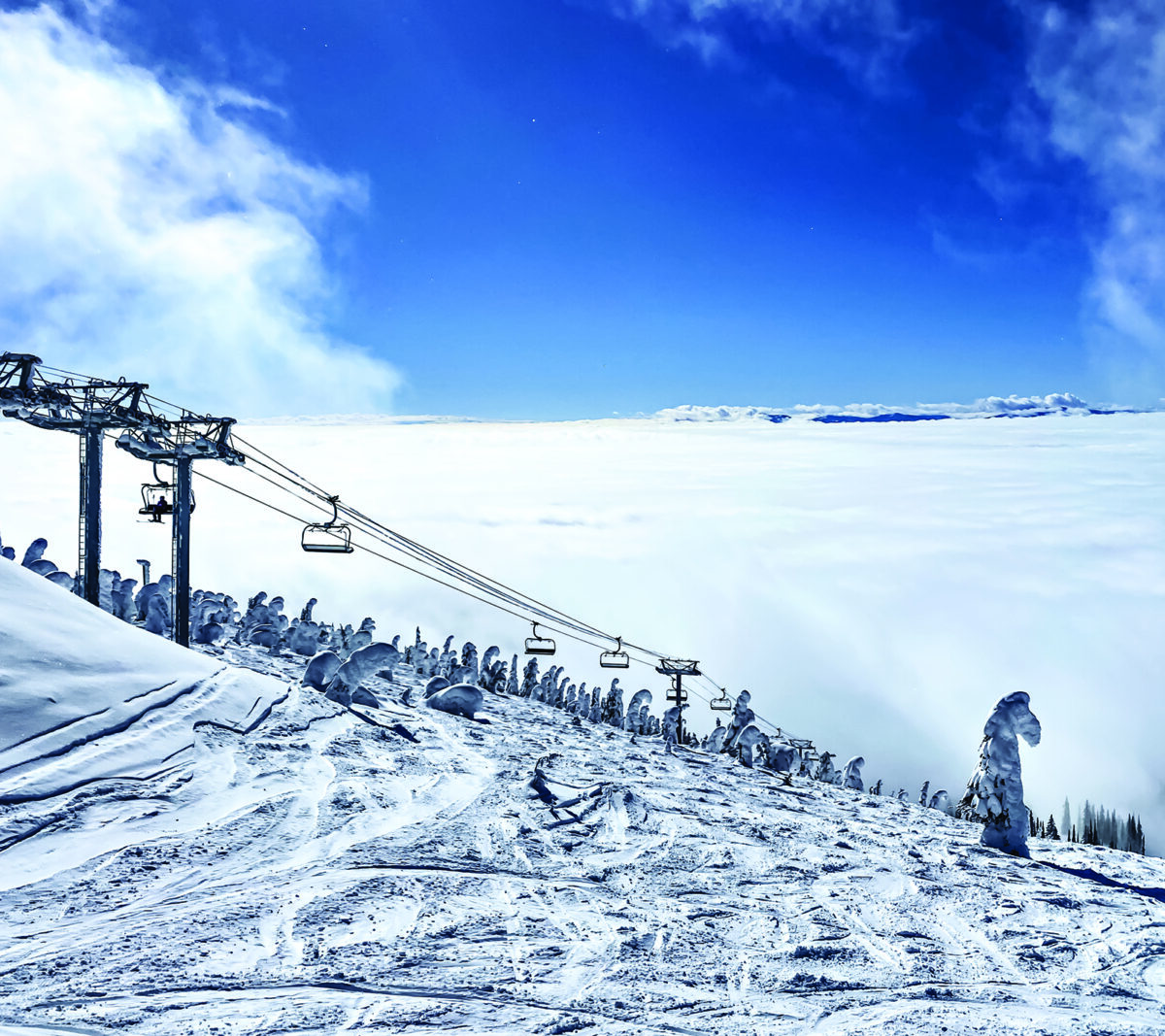
Humankind’s quest for illumination is as old as existence. Ever since the Earth’s crust stabilized and we emerged from its primordial soup, there’s been a unifying cry to banish the darkness and usher in the warm, lambent glow of light.
Sunlight. Torchlight. Candlelight. Lamplight. Firelight.
Light is knowledge. Light is metaphor. Light is light.
In the depths of a northwest Montana winter, light is also life. And in these darkest months, it often feels as though light is at a premium. Because the Flathead Valley is shrouded in a mantle of gray through much of the winter, it’s often difficult for residents on the valley floor to gather a sense of the conditions above.
Over the Thanksgiving break, Mowgli the Bernese Mountain Dog and I embarked on a quest for light, spending most of an afternoon hiking and post-holing through knee-deep snow to gain a vantage point 3,000 feet above the valley floor, where the sun finally shone over an undulating sea of clouds, their eggshell expanse intermittently impaled by the ragged peaks that form the Livingston Range in Glacier National Park. During the final 15 minutes of our climb, I was unsure whether we’d get high enough above the temperature inversion to see blue sky, and that uncertainty caused me a degree of panic that only registered after I’d begun to warm in a brilliant shaft of sunlight.
Light is survival.

We’re not alone in our lust for light, and that shared yearning for clarity helps ward off despair. But our individual quests to kindle light cast us into quandary, and not knowing whether or where to look has broken spirits stronger than mine.
When I first moved to the Flathead Valley 13 years ago, the Whitefish City Council took up this existential question as part of its regular business. Presented with a proposal to install a light in downtown Whitefish to signal to residents when the conditions were ideal atop Big Mountain, the city officials weighed in on whether to temper our collective uncertainty about what goes on above the clouds while we toil away below them.
Under the proposal, a pair of beacons would have been installed on the roof of the Great Northern Brewing Co., the tallest building in downtown Whitefish. A blue LED light would flash on days when the summit received at least 6 inches of snow overnight and an amber light would flash on inversion days, when the summit is above the clouds.
At the time, Whitefish Mountain Resort CEO Nick Polumbus told city officials that the ski area had three inversion days the previous season and 18 days in which it received more than 6 inches of snow. Polumbus suggested that by broadcasting powder and inversion days in the city center, the beacon would prompt more skiers and snowboarders to head for the hill — a prospect that augurs well both for business and morale.

“Whitefish is a community that obviously embraces the outdoors, but it is also a place that can be dark and gray for long stretches of time,” Polumbus told council members. “Powder days are celebrated by the community for obvious reasons, as are inversion days because of the break they provide from the gray. We believe this concept will help the community celebrate these relatively rare occasions in a fun, yet unobtrusive way.”
“People in the valley often don’t realize when there is an opportunity to get a little vitamin D,” Polumbus continued. “We don’t want to overwhelm people with a flashing light downtown, but these days are something to celebrate.”
Inversions are indeed something to celebrate, but what really causes them and why do we see them most often during the winters in northwest Montana? Under normal conditions, air temperature decreases with distance from the Earth’s surface. During the day, the sun heats the ground which, in turn, radiates heat into the air. As the warm air rises, it mixes with cooler air, creating a temperature gradient. Inversions occur when a cap of warm air forms over a lower layer of cold air, essentially inverting the temperature gradient. The layer of cold air close to the Earth’s surface does not rise, which prevents vertical mixing of air, trapping moisture in the upper warm layer and cold dry air close the ground.

Temperature inversions are common in winter because, as the sun sets, the air closest to the ground loses heat faster than the air above it.
Although the Whitefish Mountain Resort beacons never materialized, summit cameras now broadcast panoramic images of the conditions on Big Mountain and Blacktail Mountain to our desktops or smart phones, reducing any uncertainty about the above-the-clouds guessing game.
Even so, there are days when that low atmospheric ceiling of gunmetal gray seems so thick and impenetrable that there can’t possibly be a sun shining up above it. And on those days in particular, I like to find the light the old-fashioned way.